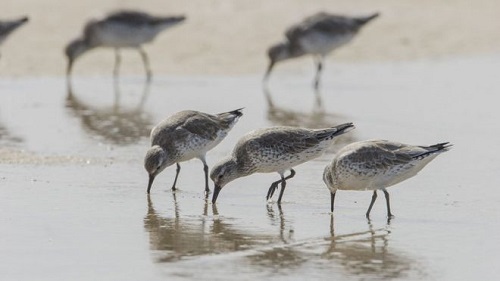A migratory bird has shrunk in stature as temperatures warm at its Arctic breeding ground, according to research.
As a consequence of climate change, the red knot may have a lower survival chance on a different continent, say scientists.
The shore bird breeds in the Arctic in the summer and flies to tropical habitats in winter, according to BBC.
Scientists believe shrinkage in body size is a response to climate change in different animals.
The wading bird is one of the record-breakers for long distance flight, being able to cover about 5,000 km without stopping.
An international team studied the bird over 30 years at its stop-off point in Russia.
“We see a change in body size and also a change in body shape,” said lead researcher Dr Jan van Gils of the Royal Netherlands Institute for Sea Research and Utrecht University.
He told the BBC’s Science in Action programme: “What is peculiar about this is that we have strong evidence that this is an effect of climate change and people have seen in other species changes in body size in response to climate change.”
 The study was the first to show that shrinking in response to climate change was a disadvantage to an animal, because the smaller birds had a lower survival rate, he added.
The study was the first to show that shrinking in response to climate change was a disadvantage to an animal, because the smaller birds had a lower survival rate, he added.
The scientists found that over the course of 30 years, the date of the snow melt in the Arctic had advanced by more than two weeks.
Meanwhile, the birds produced smaller and smaller offspring – probably because the chicks missed the main food supply at the time of the thaw.
The birds pay the price when they arrive in Africa after their long flight.
Analysis of the diet of the red knot in its winter home found that individuals with a longer bill could delve into the mud for molluscs.
However, those with a shorter bill could not reach the shellfish, and were forced to eat less nutritious food.
H.Z

